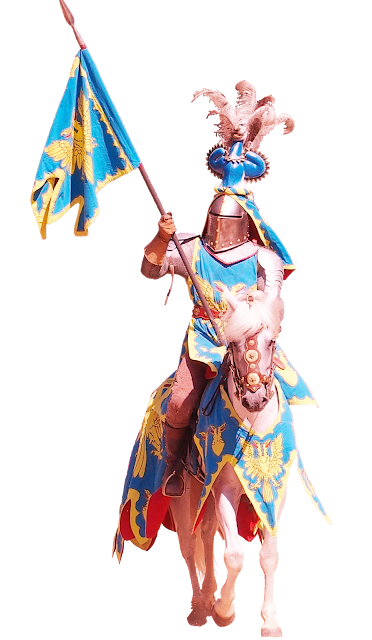Medieval Knights and Chivalry: A Glimpse into an Era of Valor and Honor
Presentation
In the huge embroidery of history, the middle age period remains as a demonstration of the gallant soul exemplified by knights. The ringing of defensive layer, the glimmer of swords, and the code of valor characterized an age where honor and mental fortitude were vital. How about we dig into the universe of middle age knights and investigate the multifaceted snare of chivalric excellencies that represented their lives.
The Rise of Medieval Knights
Idea of knighthood arose in the early middle age period, developing from the Frankish champion class. Knights were talented and vigorously reinforced cavalry officers, frequently allowed land by the ruler in return for military help. This prompted the improvement of a social ordered progression, with knights possessing a special position.
The Code of Chivalry
Fundamental to the existence of a middle age knight was the code of valor - a bunch of moral and social guidelines that directed their way of behaving. Honor, reliability, and boldness were the foundations of chivalric excellencies. Knights were not simple heroes; they were supposed to epitomize a higher moral norm.
Chivalric Virtues
1. **Courage:** Knights were prestigious for their courage on the combat zone, confronting overwhelming chances with immovable purpose.
2. **Honor:** A knight's statement was his bond. Keeping up with one's honor was principal, and any stain on it was a heinous offense.
3. **Loyalty:** Knights swore faithfulness to their master rulers, framing a bond that went past simple fealty - it was a consecrated trust.
4. **Courtesy:** Graciousness and regard were indispensable to a knight's personality. They were supposed to treat the two partners and foes with poise.
5. **Justice:** Knights were frequently entrusted with maintaining equity, guaranteeing fair treatment and security for the frail and powerless.
The Existence of a Middle age
Knight
Preparing and Pagehood
A little fellow trying to turn into a knight started his background as a page, learning the essentials of battle, horsemanship, and the code of gallantry. As he developed, he advanced to squirehood, serving a knight as an understudy.
Knighthood Ceremony
The zenith of a knight's process was the naming function, where he swore devotion to his ruler and was gave with the title of "Sir." This service denoted the proper section into the regarded positions of knighthood.
Tournament Culture
Competitions were presentations of military ability as well as any open doors for knights to exhibit their chivalric temperances. Jousting, swordplay, and different challenges gave a phase to knights to demonstrate their determination.
Legacy and Decline
The period of archaic knights and valor made a permanent imprint on history, affecting writing, workmanship, and the idea of chivalry. Nonetheless, as fighting developed, the customary job of knights decreased, and the chivalric code confronted difficulties in the changing elements of society.
End
Middle age knights and gallantry addressed a remarkable section in mankind's set of experiences, where fearlessness and honor were venerated most importantly. The reverberations of conflicting blades and the resonating standards of valor keep on charming our creative mind, helping us to remember a time when knights endeavored to exemplify the noblest temperances chasing a higher reason.


